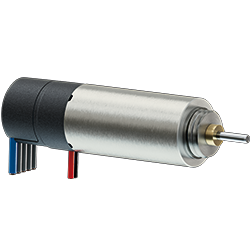Top 5 Robot Trends 2021 – International Federation of Robotics
Annual installations of industrial robots more than tripled within ten years (2010-2019) reaching 381 thousand units in factories around the world. The International Federation of Robotics shows top 5 trends shaping industries around the globe.
Annual installations of industrial robots more than tripled within ten years (2010-2019) reaching 381 thousand units in factories around the world. The International Federation of Robotics shows top 5 trends shaping industries around the globe.
"The mission to combine traditional production with 'go digital strategies' puts robots in a pole position," says Dr Susanne Bieller, General Secretary of the IFR.
Robots learn new tricks: Artificial intelligence software in combination with vision and other sensing systems, allow robots to master difficult tasks. One such task is bin picking, that in the past was only feasible for a human hand. New generations of robots are easier to install and program and they are connectable. Advances in communication protocols integrate robots seamlessly into automation and Industry 4.0 strategies.
Robots work in smart factories: The automotive industry pioneered smart factory solutions utilizing industrial robots throughout assembly lines that have dominated traditional automobile production for more than 100 years. The future belongs to networked interaction of robots and autonomous mobile robots (AMRs). When models are changed completely, it is only necessary to reprogram the robots and AMRs rather than to dismantle the entire production line.
Robots enter new markets: The connectivity breakthroughs contribute to increased robot adoption in manufacturing sectors that have only recently turned to automation, such as food and beverage, textiles, wood products and plastics. Ongoing digital transformation will lead to completely new business models, because producers can diversify more easily than ever.
Robots reduce carbon footprint: Investments in modern robot technology will also be driven by the requirement for a smaller carbon footprint. Modern robots are energy-efficient, thus directly reducing energy consumption of production. Through higher precision, they also produce fewer rejections and substandard goods.
Robots help to secure supply chains: The pandemic situation has made the weakness of globalized supply chains visible. Manufacturers have the opportunity to rethink supply with a completely different outlook. When productivity is leveled through automation, manufacturers have increased flexibility that may not have been available in high-wage countries like most of the European Union, North America, Japan or the Republic of Korea.
Full text version at: https://ifr.org/ifr-press-releases/news/top-5-robot-trends-2021
Video by IFR - The World's Top 10 automated countries: https://ifr.org/ifr-press-releases/news/robot-race-the-worlds-top-10-automated-countries
About IFR
www.ifr.org
Featured Product

FAULHABER MICROMO - Impressive accuracy through the latest chip technology
With the launch of the IEP3, FAULHABER expands its product line with an incremental encoder which, thanks to the latest chip technology, achieves a very high resolution and accuracy. With a diameter of just 8 mm, the IEP3 is very lightweight and compact yet still offers a resolution of up to 10,000 lines per revolution - made possible by the latest chip technology with high interpolation. In the standard version, the resolution is freely programmable from 1 - 4,096 lines per revolution. Moreover, the chip technology that is used ensures a high positional accuracy of typically 0.3 °m as well as a high repeatability of typically 0.05 °m thanks to accuracy compensation.
